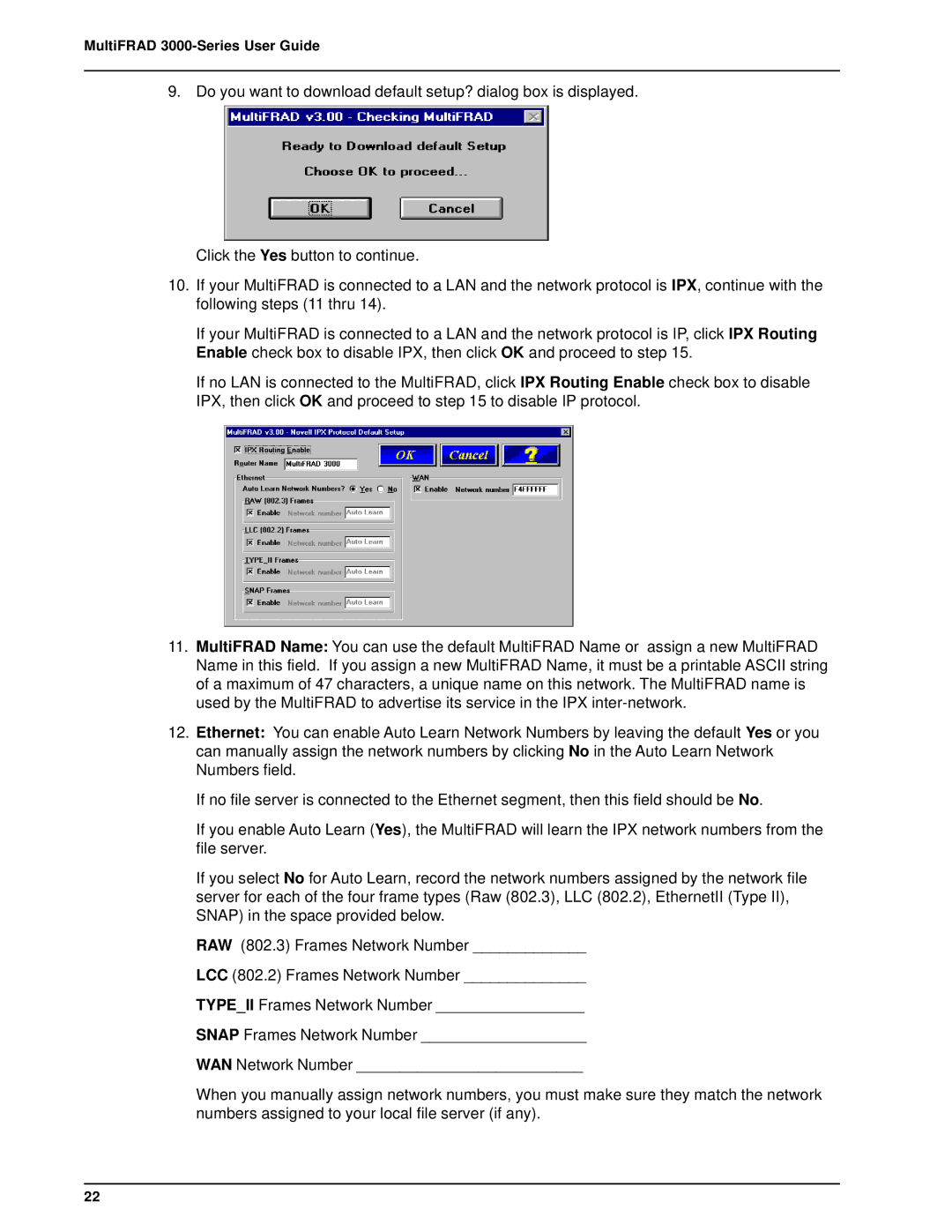
MultiFRAD 3000-Series User Guide
9. Do you want to download default setup? dialog box is displayed.
Click the Yes button to continue.
10.If your MultiFRAD is connected to a LAN and the network protocol is IPX, continue with the following steps (11 thru 14).
If your MultiFRAD is connected to a LAN and the network protocol is IP, click IPX Routing Enable check box to disable IPX, then click OK and proceed to step 15.
If no LAN is connected to the MultiFRAD, click IPX Routing Enable check box to disable IPX, then click OK and proceed to step 15 to disable IP protocol.
11.MultiFRAD Name: You can use the default MultiFRAD Name or assign a new MultiFRAD Name in this field. If you assign a new MultiFRAD Name, it must be a printable ASCII string of a maximum of 47 characters, a unique name on this network. The MultiFRAD name is used by the MultiFRAD to advertise its service in the IPX
12.Ethernet: You can enable Auto Learn Network Numbers by leaving the default Yes or you can manually assign the network numbers by clicking No in the Auto Learn Network Numbers field.
If no file server is connected to the Ethernet segment, then this field should be No.
If you enable Auto Learn (Yes), the MultiFRAD will learn the IPX network numbers from the file server.
If you select No for Auto Learn, record the network numbers assigned by the network file server for each of the four frame types (Raw (802.3), LLC (802.2), EthernetII (Type II), SNAP) in the space provided below.
RAW (802.3) Frames Network Number _____________
LCC (802.2) Frames Network Number ______________
TYPE_II Frames Network Number _________________
SNAP Frames Network Number ___________________
WAN Network Number __________________________
When you manually assign network numbers, you must make sure they match the network numbers assigned to your local file server (if any).
22
